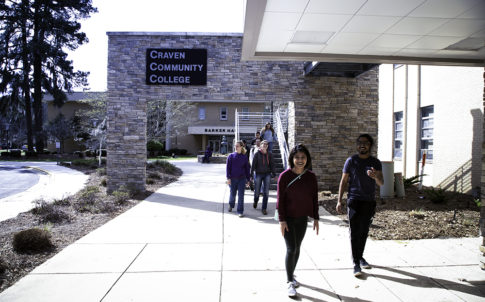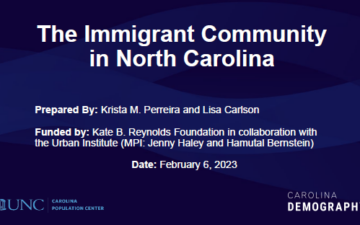NC in Focus: College Student Impact on Local Poverty Rates

Colleges and universities can have a significant impact on local demographic and economic statistics. College towns tend to see inflated poverty rates: more off-campus students (as share of population) corresponds to higher poverty rates. In Boone, North Carolina, for example, off-campus students at Appalachian State University make up 57% of the local population* and the local poverty rate is 62%.
Some of these poor individuals may be college students who are choosing not to work or working only part-time, relying instead on a combination of loans or grants, credit cards, and savings and parental assistance when it is available. Others may be college students for whom poverty is a very serious challenge. But many are not college students at all. Understanding the impact of college students on local poverty rates is vital for local leaders to fully understand and track the economic well-being of their population.
Using the recently released 2012-2016 American Community Survey five-year estimates, the U.S. Census Bureau published two tables that identify counties and communities where off-campus college students significantly impact local poverty rates. Limiting their evaluation to locations with populations of 10,000 or more, the report found:
Need help understanding population change and its impacts on your community or business? Carolina Demography offers demographic research tailored to your needs.
Contact us today for a free initial consultation.
Contact UsCategories: Economic Data
Tags: American Community Survey, college towns, poverty rates, U.S. Census Bureau

The Center for Women’s Health Research (CWHR) at the University of North Carolina School of Medicine released the 12th edition of our North Carolina Women’s Health Report Card on May 9, 2022. This document is a progress report on the…

Dr. Krista Perreira is a health economist who studies disparities in health, education, and economic well-being. In collaboration with the Urban Institute, she recently co-led a study funded by the Kate B. Reynolds Foundation to study barriers to access to…

Our material helped the NC Local News Lab Fund better understand and then prioritize their funding to better serve existing and future grant recipients in North Carolina. The North Carolina Local News Lab Fund was established in 2017 to strengthen…
Your support is critical to our mission of measuring, understanding, and predicting population change and its impact. Donate to Carolina Demography today.